The three châteaux by bike
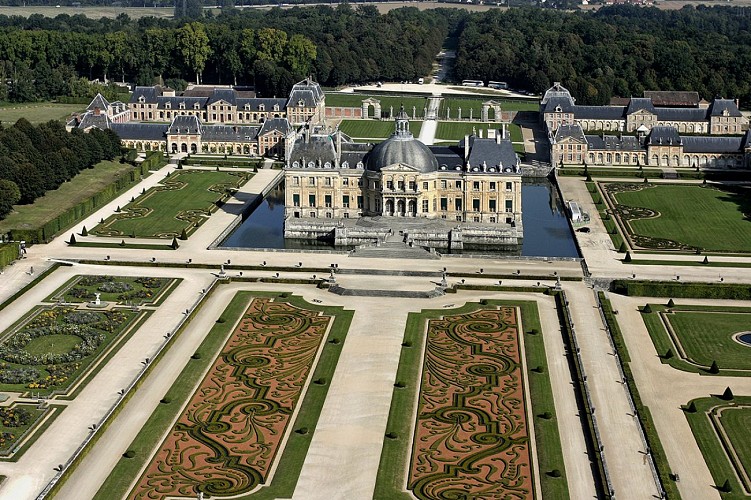
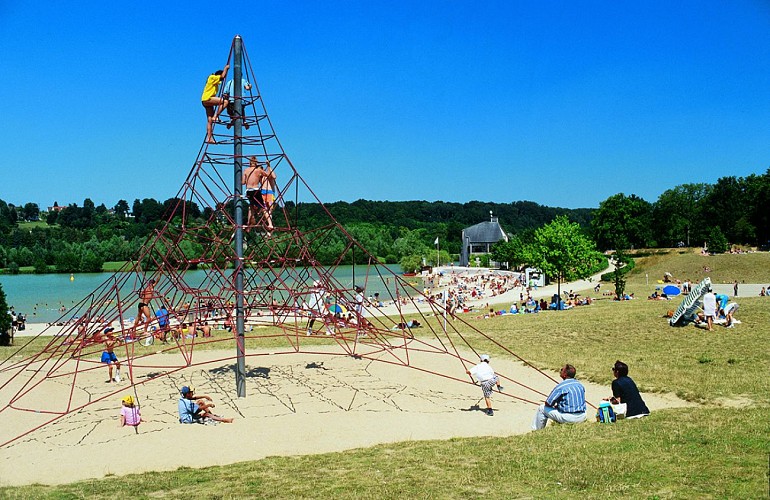
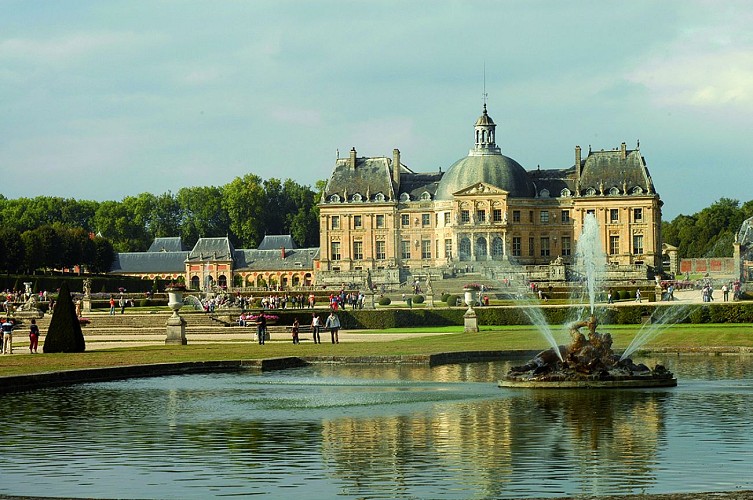
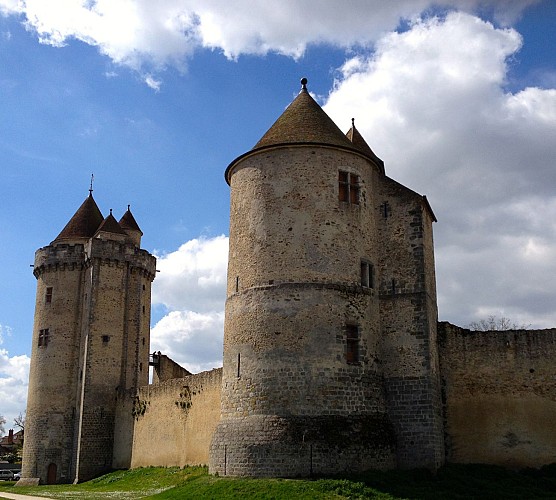
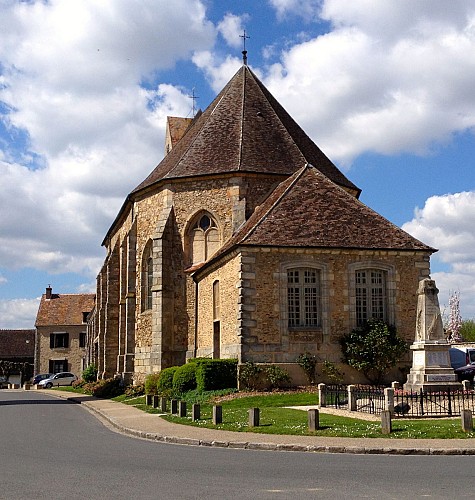
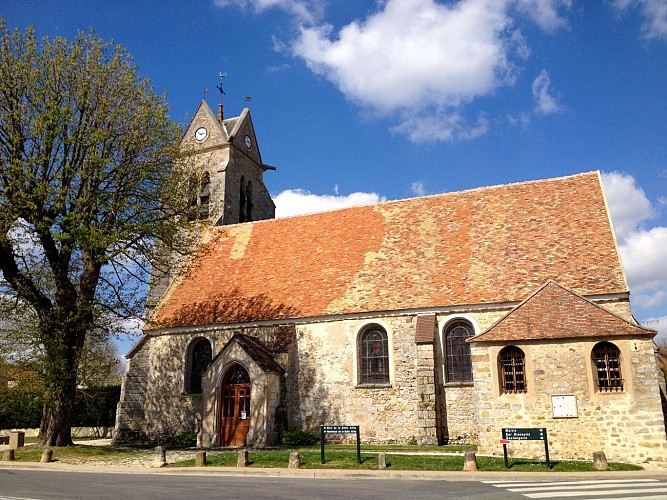
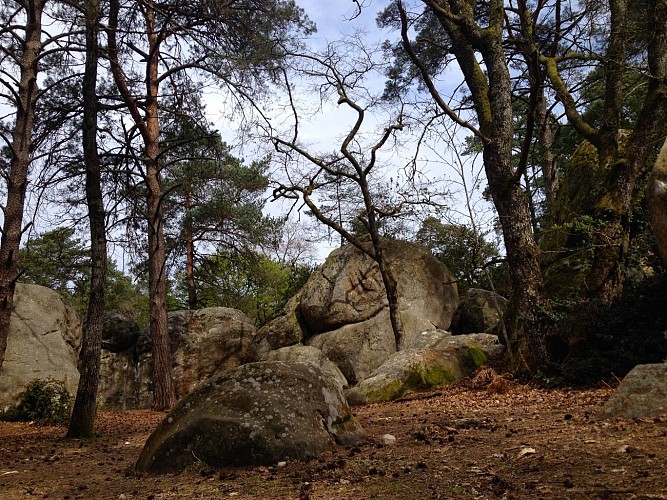
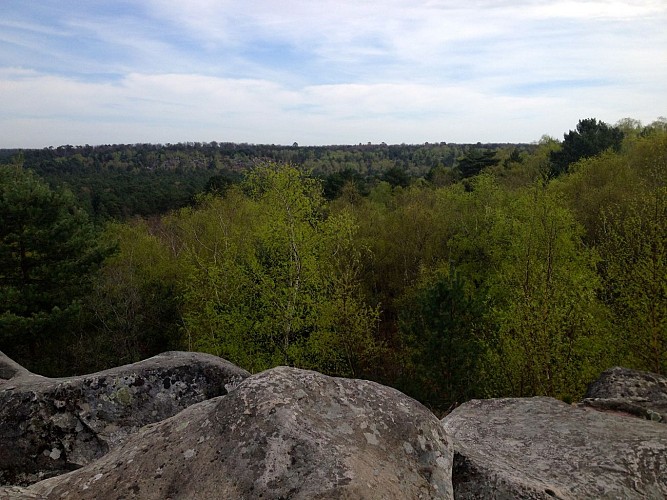
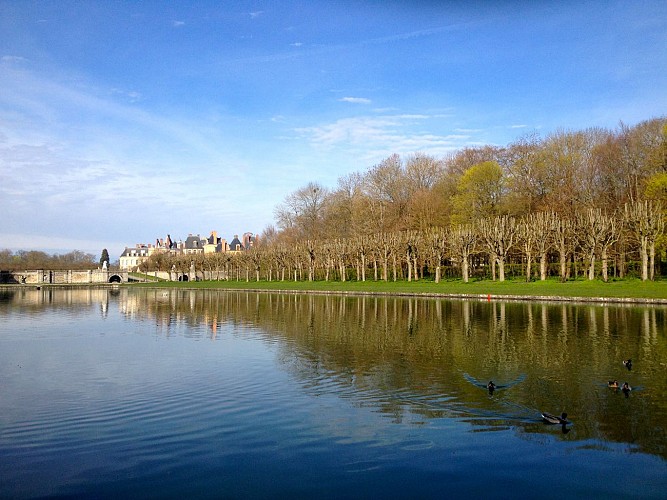
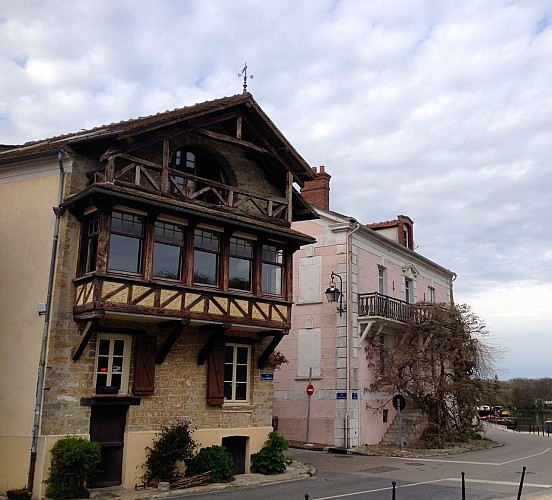
Description
A 2-day loop to discover 3 majestic châteaux – Fontainebleau, Vaux-le-Vicomte and Blandy-les-Tours – the Fontainebleau Forest and the painters’ village of Barbizon.
Perfect for a weekend of bicycling just outside Paris.
The northern section of this loop will lead you to three prestigious historic sites, from the banks of the Seine River on the edge of the Fontainebleau Forest to the Ancoeur Valley and its two fascinating châteaux: Blandy-les-Tours Castle with its medieval military architecture and sumptuous Vaux-le-Vicomte with its French formal garden. You’ll also admire picturesque villages and verdant landscapes of forests and fields.
However, please do be careful crossing certain heavily used roads, especially if cycling with children! This first northern section of the discovery loop is not recommended for children under 12 years of age.
The southern section of the “Three Châteaux Loop” will take you from Bois-le-Roi to Fontainebleau and its famous château, the former residence of French monarchs, for a sylvan excursion passing through the painters’ village of Barbizon before returning to Bois-le-Roi. The loop takes advantage of dedicated greenways passing through the forest for peaceful peddling.
This southern section is well suited to younger cyclists, but certain portions are not tarred/paved.
Technical informations
75 km
|
max. 140 m
min. 39 m
604 m
604 m
| |||
Accessibility | ||||
Styles : BaladeDiscoveryIn the country Theme : Patrimony | ||||
Altimetric profile
Starting point
Steps
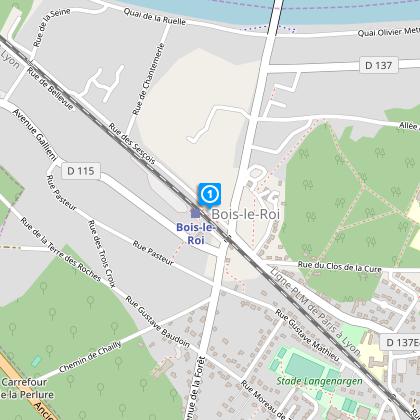
The Bois-le-Roi railway station
Departing from the Bois-le-Roi railway station, turn left and pedal to Quai de la Ruelle, via the first street on the right: Rue Chantemerle. Bike left up the Seine River. After the last house, you reach a pleasant tarred greenway, for a tranquil bit of biking along the water.

La Rochette
In La Rochette, you reach a two-lane road taking you to Melun. At the stop sign before the railway bridge (at the river port), continue straight on along the Seine
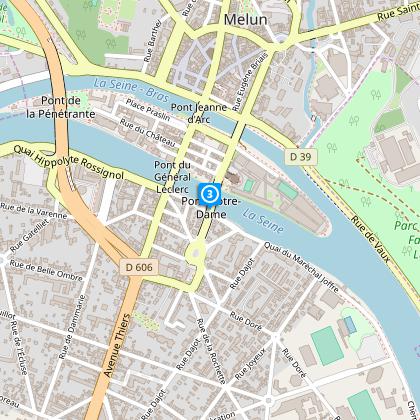
Melun
Cross the Seine as soon as you arrive in town. Cross the first bridge, accessible on the left just before the bridge, via Rue Augereau. Passing through Melun can prove dangerous for inexperienced cyclists: for less traffic-hardened bikers, we recommend walking the 800 metres of this urban section. After the bridge, at the traffic light, continue straight on along Boulevard Gambetta, ending at the Place Saint-Jean square. Diagonally cut across this square to reach Rue Bancel. Here you can once again mount your bike. After a few dozen metres, bear right on Rue des Trois Moulins. Pass two traffic lights, then under the D605 secondary-road bridge. Immediately afterwards, turn left at the fork in the road to bike up Rue des Trois Moulins. At the end of this short climb, bike along the garden wall to reach slightly to the right (just prior to the road sign for entering Rubelles) Rue de Praslin, heading towards Maincy. Then turn right to once again bike along Rue des Trois Moulins, to pedal through fields and woods. After the last house, enter the forest via the path straight ahead, accessible by crossing the road where it loops just before the bridge. Careful crossing the road where it turns, for visibility is poor. At the first fork, take the right-hand path. A few dozen metres further, you reach a field via a grassy path, then the D82E2; turn left onto this secondary road. Here a slight climb awaits, but no need to wear the yellow (or polka dot) jersey, it’s perfectly surmountable! Pass by a few houses now dotting the landscape, then turn right onto Chemin des Temps Perdus.
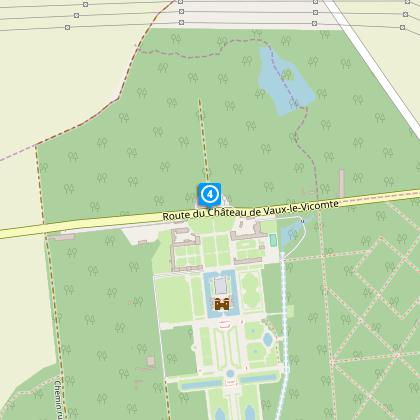
Château de Vaux-le-Vicomte
Continue along this forest path that then turns right, taking you to the park wall surrounding Château de Vaux-le-Vicomte. Follow the wall left to arrive at the road. Pedal to the château by turning right at the car park. And here you are, before a crown jewel of 17th-century French heritage! The château is treasured for not only its amazing architecture, but also its French formal gardens designed by André Le Nôtre. All that we owe to one Nicolas Fouquet!

Moisenay
After your stroll through French history, jump back on your bike to pedal to another château, that of Blandy-les-Tours. Bike a few hundred metres up along the road passing in front of the château. Reach Moisenay via the second road on the right.
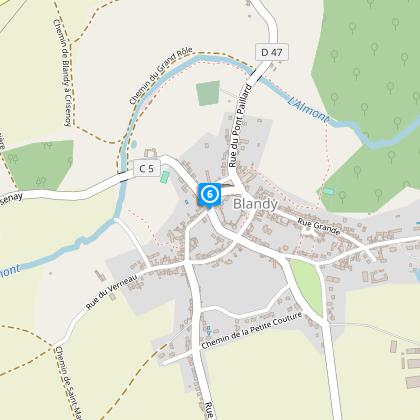
Blandy Castle
Upon entering the village of Moisenay, turn left onto Rue du Marronnier. Immediately after the cemetery, turn left at the roundabout onto the D126, then take Rue des Buttes and Rue des Sirènes in Le Petit-Moisenay. Pass under the high-voltage power lines: no better time to practice your sprinting! Leaving Moisenay behind, you can continue your speed session by pedalling against a TGV high-speed train or cars cruising along the motorway down below. Continue straight on. A lovely downhill section awaits, with a splendid view of Blandy Castle. Take advantage of the downhill to better attack the steep climb into the village, where you arrive at the castle. Climb up the keep steps and walk around the parapet. Château de Blandy-les-Tours is an exceptional vestige of medieval military architecture in Île-de-France. After your tour of the fortress, hop back on your bike and pedal around the castle to the bakery crossroads.

Leaving Blandy-les-Tours
At the bakery, turn right onto Rue Kourilsky. After exiting the village, pedal straight on along Rue du Verneau, a dead-end road that ends in the midst of fields. Where the road ends, you’ll find three paths: take the left-hand path. At the first intersection in the fields, turn right and pass under the high-voltage power lines, the motorway and the TGV railway. Continue straight on along this path, passing multiple crossroads as you pedal through the undergrowth along this bumpy sloping trail. Cross the D126 secondary road straight on. Head towards the water tower and turn left just before you reach it. Carefully cross the D408 secondary road, remaining vigilant for traffic. Continue straight on, then pass through the midst of farmsteads; the road turns slightly left before the first building. At the next crossroads, take the left-hand road.
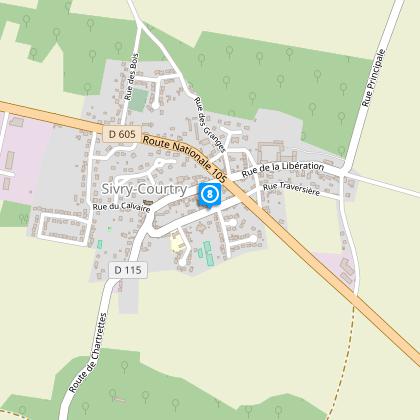
Sivry-Courtry
Arrive at Sivry-Courtry by first skirting the sports ground, then turning left onto the road at the entrance to the small wood. Arrive at Rue de la Libération. Turn right to immediately arrive at a traffic light. Cross the road and bear left to continue a few metres along the D605 (you’re protected from the main traffic flow by the traffic light). Immediately turn right onto Rue de l’Église. At the end of this road, head left in the direction of Bois-le-Roi and Chartrettes. Bike along the tarred secondary road. At the intersection after a copse, turn right onto the D115 towards Bois-le-Roi and Chartrettes. Continue along this road for 5 km to reach Chartrettes.

Chartrettes
Upon entering the village of Chartrettes, turn left onto the first street: Rue des Ecoles (RD 135) and pass by the town hall. Continue straight on along Rue Omer Tan. At the end of this road, at the fork in the wood, turn right onto Rue du Buisson. Next, take the 2nd right-hand road, after the turn: Rue des Soupirs. At the end of this road, turn right to bike along the village’s main street: Rue de la Chevalerie. Be careful on this relatively narrow, descending road, notably when passing through the tunnel beneath the railway. At the end of this road, upon reaching the Seine River, turn right then cross the road a dozen metres further to arrive at the towpath. At first narrow, the path eventually widens. Continue along the towpath until the dam on the Seine, just after the water skiing club and river port. A few tourist-information panels here present the history of Chartrettes and its close link to the Seine.
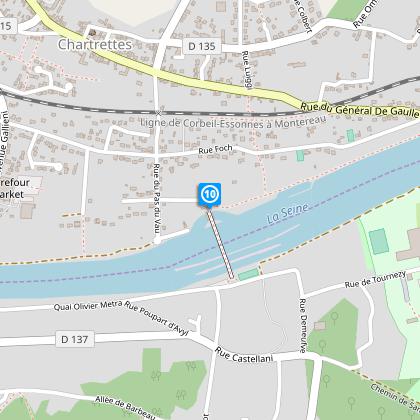
Bois-le-Roi: Seine riverbanks and recreation park
To cross over the Seine, take the ramp that turns and climbs up to the dam footbridge. Careful: the dam footbridge is rather narrow and the ground can be slippery in rainy weather, so don’t hesitate to walk over. After crossing the Seine, if you’d like to head to the Bois-le-Roi railway station, turn right onto Quai Olivier Métra and continue on to the bridge. At the bridge, take the path passing under the bridge below the quay; don’t hesitate to walk this section for the path is rather steep. Pass under the bridge then climb immediately back up, onto Quai de la Ruelle. After a few dozen metres, turn left onto Rue Chantemerle heading up; to reach the railway station, turn left at the top of Rue Chantemerle. After the bridge over the Seine, if you’d like to continue on to the southern portion of this loop, to explore Fontainebleau and Barbizon before returning to the Bois-le-Roi railway station (1-day excursion), turn left onto Rue de l'Île Saint-Pierre after a few dozen metres. At the end of the street, turn right onto gently climbing Rue Demeufve, then immediately left onto Rue de Tournezy. Enter the Bois-le-Roi recreation park, a pretty spot perfect for a refreshing swim (closed at night). Within the park, continue straight on, passing by the reception and the equestrian centre. Before the swimming area, turn right onto the tarred, arcing road. At the end of this road, turn right at the roundabout onto another tarred road. Continue straight on to exit the park.
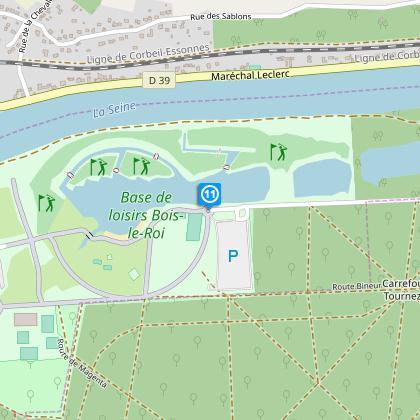
The Samois-sur-Seine promenade
To exit the recreation park, continue straight on and follow the tarred road skirting the golf course. At the end of this road, carefully cross the very busy D116 secondary road and in the forest take Route de la Pépinière. At the first crossroads, turn left onto Route Victor and continue straight on. At the end of this forest road, you arrive at the Promenade de Samois along the Seine River. Turn right to pedal along this pleasant shady path dotted with botanical information panels on the “wild apple”, “Italian poplar”, etc. This promenade comes to an end at the Petit Barbeau car park. Follow the cars along the tarred road, continuing straight on to leave the forest for the fields. At the stop sign on the edge of the village of Samois, continue straight on to reach the Seine and its river barges.

From Samois to Fontainebleau
At the stop sign after the port of Samois, turn left onto the footbridge to reach the Île de Samois. It is here on this island that an international jazz festival is held each June, in honour of the renowned Django Reinhardt. Leaving the island, wave goodbye to Django’s statue and turn left back onto the tarred road, to continue on to Fontainebleau along the Seine for 2.5 km. At the end of the road, before the bridge over the Seine, you encounter heavy traffic: to avoid all these cars, bear left to pass under the Pont de Valvins bridge via a one-way road (next to the exit sign for the village of Samois). Be careful pedalling the wrong way down this narrow road and keep right! At the stop sign, bike along the left-hand pavement to take the first left onto Rue du Port de Valvins. You’re now only a few metres from the Avon-Seine greenway: the narrow path snaking its way upwards on the right at the end of the street to join a forest trail.
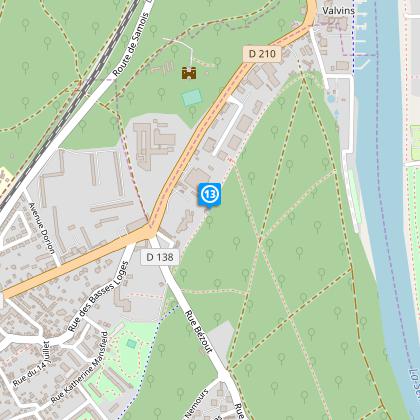
To the château
The forest path turns into a bike path, leading to and ending at the very busy D138 secondary road. Cross this road via the pedestrian crossing to enter immediately on the left the Prieuré des Basses Loges car park (don’t hesitate to walk this section). At the far end of the car park, you’ll once again find the bike path behind the fence. At the end of the gravelly bike path, cross the roundabout to continue opposite along the now tarred bike path. Continue straight on to reach the viaduct. At the viaduct, cross the road via the pedestrian crossing and continue straight on along the bike path to reach the Château de Fontainebleau gardens, via Rue Carnot. Upon reaching the Place Carnot square, follow the bike path climbing right along the park wall via Rue Dumoncel until the château entrance opposite Rue Montceau (on your left). Upon entering the château grounds, turn left to follow the left bank of the Grand Canal. Admire the magnificent view of the palace and its gardens.

Château de Fontainebleau
Be sure to visit Fontainebleau Palace, the residence of French monarchs for eight centuries. Stroll about the splendid gardens, admire the ballroom and the Gallery of Plates, and discover the Empress’s royal apartments. At the end of the canal, turn right onto Avenue des Cascades to exit the park, then turn right again onto Rue Paul Séramy. Continue on until the traffic light, where you turn left onto Rue Grande. Be careful, this road is very busy. After pedalling a few metres, at the square, next to the merry-go-round, turn right onto Rue de France. At the first crossroads (with a stop sign), continue straight on. At the second crossroads, turn right at the stop sign onto Rue Saint-Méry. Continue straight on along this road until you reach the intersection with Rue de la Paroisse. Turn left and follow this road to the traffic light. At the traffic light, cross Boulevard du Maréchal Joffre and continue straight on. About a hundred metres further on, left of the war memorial, the “Route Louis Philippe” greenway (closed to traffic) will allow you to safely and tranquilly explore the
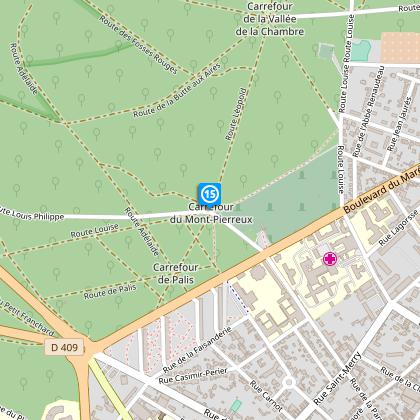
The Fontainebleau Forest
Now enter the forest via the Route Louis Philippe. Continue straight on, all the way to the end of this forest greenway. At the crossroads, continue straight on along the Route Paul forest road. Listen to the beautifully singing chaffinches as you pedal through this peaceful nature reserve. At the end of this road, take the underground tunnel beneath the D607. Upon exiting the tunnel, bear slightly right onto the tarred Route du Bouquet du Roi and continue straight on along this road. At the end of this forest road, cross the secondary road to continue straight on towards the Apremont Gorges. Be careful crossing the D301. Continue straight on along Route de la Gorge aux Néfliers. A little further on, you arrive at the Apremont Gorges. Be sure to admire the lovely view of the forest, just after the rocks on your right. Here, vehicles can access the car park. After this well-deserved break, turn right after the car park onto Route de Sully that winds its way downwards and becomes Route Marie-Thérèse until the restaurant “La Caverne des Brigands” located at the Bas Bréau car park. At the little roundabout at the far end of the car park, turn left onto Allée des Vaches, leading you into Barbizon.
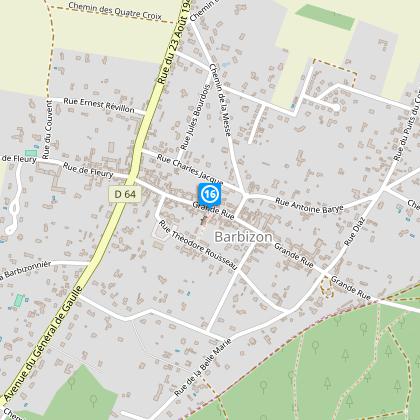
Barbizon
In Barbizon, you can hop off your bike to stroll about this charming village, colourful home and inspiration to such painters as Jean-François Millet. Admire the old stone homes and flower-filled gardens transformed into open-air art galleries.
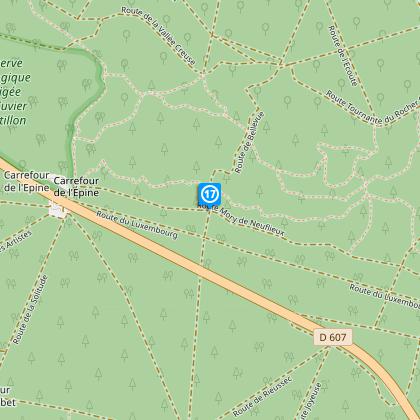
The Cuvier Châtillon rocks
To return to Bois-le-Roi from Barbizon, reenter the forest along Allée aux Vaches. From here on, the itinerary will no longer follow tarred roads. At the Bas Bréau crossroads, continue opposite along the road from Barbizon to Fontainebleau, then a little further on, at the corner of a fenced plot of land, turn left onto Route de la Solitude. This aptly named road will lead you to the D607, which you pass under via the tunnel. After passing under the secondary road, head towards the car park and turn immediately right onto Route Mory de Neuflieux. At the first intersection, turn left onto Route de Bellevue to access the Cuvier Châtillon rocks, a popular rock-climbing spot. But don’t exhaust yourself here bouldering, for the itinerary’s biggest challenge is just around the corner… Snake among the rocks to join a steep and winding white-stone path. At the top, turn immediately right to follow Route Tournante du Cuvier Châtillon. At the first intersection, turn right again onto Route du Cuvier Chatillon. Follow this grassy, sandy path in the direction of the Mare à Piat pond, continuing straight on at the first intersections you come to.
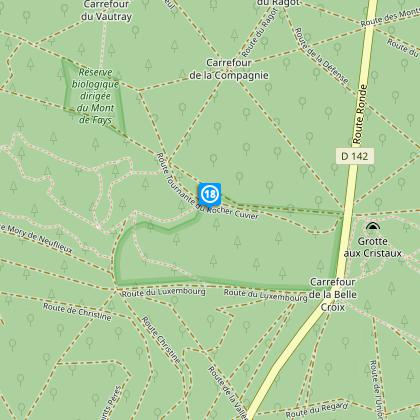
La Mare à Piat
At the next intersection, take the narrow path to the right snaking its way through the vegetation. Pedal tranquilly along this narrow, paved path leading to the Mare à Piat pond, a favourite haunt of mallards.

The “Cave of Crystals”
After La Mare à Piat, continue a little ways further along the same narrow path, before once again following Route Tournante du Cuvier Chatillon on your left, paralleling the path. Continue pedaling along this road that will lead you to a car park along the D142. Be very careful crossing this road. On the other side of the road, get off your bike to go check out down below the Grotte aux Cristaux. After your visit, head back towards the D142 and take the first path on the left, which you follow some 200 metres back to the car park. Careful, this path is best suited to mountain bikes; if you like, you can walk this short section.
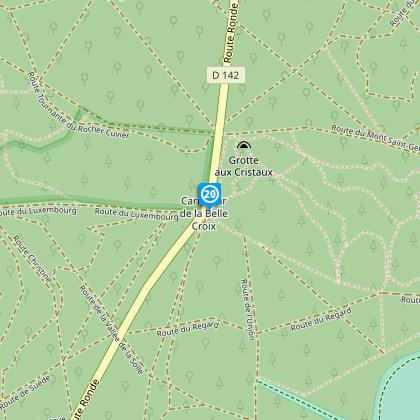
To Bois-le-Roi
You come to a large grassy and sandy car park. Cut diagonally across the car park to join Route du Luxembourg, with a rather steep yet short gravelly downhill section. If you hear the racecourse loudspeaker, then you’re headed in the right direction. After the racecourse, approaching a clearing, bear slightly left onto Route du Sport, passing behind a car park. At the end of Route du Sport, turn right onto Route du Mont St Germain. At the end of this road, cross the D606. Be careful crossing this very busy secondary road. On the other side of the road, continue straight on a few metres further, then take the first left: Route de la Deuxième Tête, which will lead you to Route de la Butte St Louis. At the first crossroads, turn right onto Route Victor, where you might meet a few convivial cuckoos. At the end of the road, turn left onto Route des Ventes Bouchard. Further on, follow the second road on the right: Route des Larmières. You come to the old Route de Bourgogne, which you carefully cross via the pedestrian crossing. Continue along the bike path on the left to enter Bois-le-Roi. At the first intersection, continue straight on along the bike path. At the roundabout, turn right onto Avenue de la Forêt. Continue straight on along this road until the passage under the railway; the Bois-le-Roi railway station is just around the corner.
Points of interest

Bois le Roi leisure centre
Situated between the river banks of the Seine and the forest of Fontainebleau, the leisure center has a lot to offer to the whole family: a real heaven of nature and 73 hectares of green grounds, an 8 hectare lake and a various choice of leisure activities. A nice setting for relaxation !Sport activities are proposed with trainers and equipment for initiation or intensive training during several days. There a housing facilities (166 beds) a camp site (110 spots), rooms for reunions (rental for school groups, seminaries). Golf and horse riding facilities on spot.
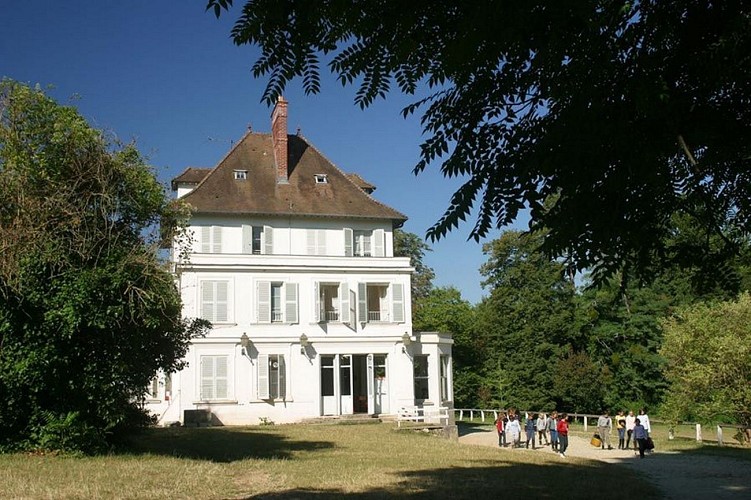
Centre d'hébergement de l'île de loisirs de Bois-le-Roi
Le centre d'hébergement de l'île de loisirs de Bois-le-Roi dispose de 166 lits répartis en trois bâtiments et de 73 lits en roulottes. "Le château" - hébergement de groupes ou de stages sportifs de 44 places en chambres multiples. Labellisé "Accueil vélo"Cette ancienne demeure de la famille Félix Potin a du caractère. Sa façade nord donne vers la Seine et la grande carrière d'équitation. Le château comporte des chambres de 3 à 9 lits au rez-de-chaussée et au premier étage. Les sanitaires sont situés sur les paliers des chambres. Le rez-de-chaussée est complété par trois salles de 40 à 100 m² , dédiées aux scolaires, à la détente ou aux réunions. "La forêt" - hébergement de groupes ou de stages sportifs de 56 places en chambres multiples. Ce bâtiment est situé à proximité du restaurant, du côté de la forêt de Fontainebleau. Il comporte 8 chambres de 6 lits (2 lits à étage et 2 lits en mezzanine) et 4 chambres de 2 lits pour l'encadrement. Les salles de bain homme et femme comportent chacune 4 douches et 3 WC. Le + développement durable : l'eau chaude des sanitaires est obtenue à partir de panneaux solaires "Les abeilles" - hébergement de groupes ou de stages sportifs de 66 places en chambres multiples. Au rez-de-chaussée ce bâtiment comporte 14 chambres (1 de trois lits et 13 de 4 lits). Ces chambres proposent 2 ou 3 lits bas et 1 lit en mezzanine. Chaque chambre comporte une salle de bain avec douche et lavabo. Les WC sont répartis dans les couloirs. Au premier étage 1 chambre de 11 lits convient à l'accueil de groupes ou de randonneurs. Ce bâtiment comporte un hall avec espace muni d'une cheminée et une salle de réunion de 48 m².
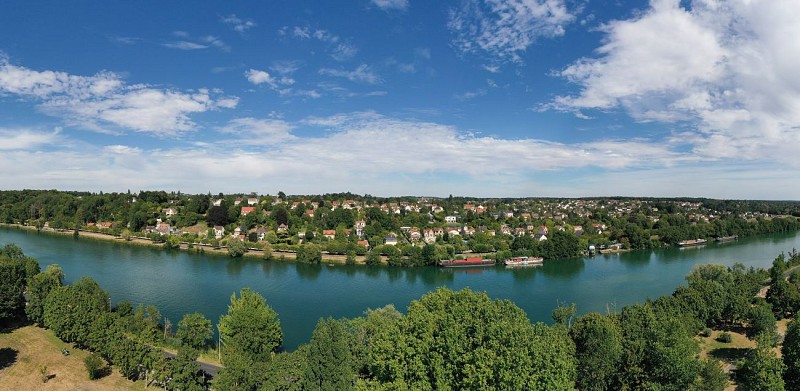
La Belle Etoile
Un camping trois étoiles calme et chaleureux, à proximité des plus grands sites touristiques du sud de l’Île-de-France et de Paris… c’est La belle étoile, à Melun !« La belle étoile » est l’endroit idéal pour le touriste de passage qui veut accéder facilement aux sites d’un patrimoine culturel et historique exceptionnel tout proche : Fontainebleau (15 mn), Vaux-le-Vicomte (10 mn), Barbizon (10 mn), Provins (50 mn), Disneyland Paris (45 mn)… ou Paris (25 mn) ! C’est aussi un lieu de séjour pour les vacanciers et la famille qui disposent de tout le confort pour des vacances agréables : espace aquatique avec bassin chauffé, terrains de sport et d’activités multiples, notamment pour les enfants ; snack, pizza, épicerie… Ils trouveront aussi à proximité de nombreuses activités de loisirs : équitation, bases de loisirs, forêt, escalade, golf… En bord de Seine, « La belle étoile » propose, dans un cadre paisible, 170 emplacements séparés, herbeux et semi ombragés. La majorité d'entre eux possède un branchement électrique (6A). Trois blocs sanitaires, confortables et parfaitement entretenus, sont répartis sur le camping. De la tente individuelle au mobile home/chalet pour six personnes, de nombreuses formules de location s’offrent à vous.

A la Petite Reine, Cycles
"A la Petite Reine", located in Fontainebleau for more than 30 years, offers you a wide range of bicycles for rent or for purchase to ride in the forest or along the Seine.If you need to buy, to repair or to rent a bike, the staff will advise and help you to choose. The wide offer for children and adults fits the demands for everyday use or for sport passion. Here you will find the ideal bike. There is also a cloth and accessories choice useful for your cycling activities.
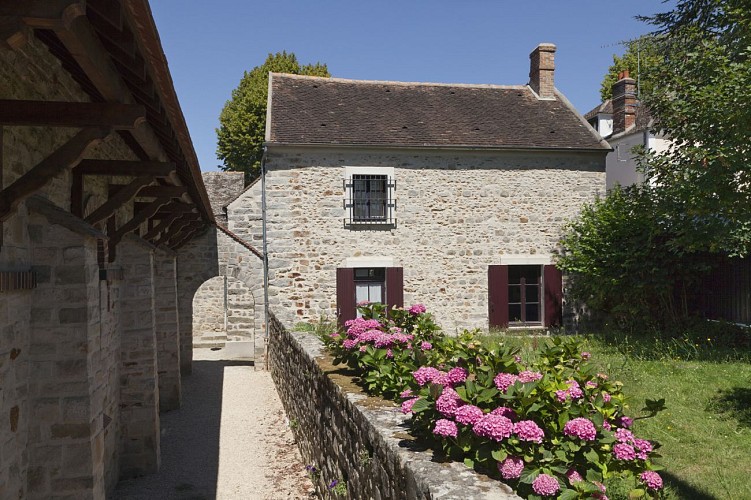
Barbizon
Welcome to the landscape painter’s village at the edge of the Fontainebleau forest. This charming village between fields and forest was a homestead to many painters who made the place famous throughout the world.Barbizon is the meeting-point of painting and nature. A village where the artists and peasants alike wore sabots, forerunners of a new genre. A small hamlet whose name was given to a famous painting school: the landscape painters. Theodore Rousseau arrived in Barbizon first, Millet joined him two years later, followed by the other Pre-Impressionnists, such as Corot or Daubigny. At the Ganne Inn, they are given meals and lodging in exchange for paintings which decorate the wardrobes, sideboards, fireplaces. These places plunge you back in time, into the atmosphere of the artists who when working on the motifs of Nature, found the most beautiful subjects.

Castle of Blandy
Blandy is a medieval fortress last one left as well restaured in the Ile-de-France region.The first baronial residence was built in the thirteenth century, in the form of a simple manor with an irregular surrounding wall. Later that century, considerable fortification work was done, particularly the three towers which were added to the fortified entrance tower. A large residential building was built inside these fortifications. The fourteenth century saw considerable development of the château defences, with a moat and a new tower entrance boasting a spiked drawbridge. In the second half of this century Blandy became the model for fortified castles. The keep, 39 metres high, defended by two drawbridges, was built. The keep was altered by the addition of new towers and curtain walls. Between the fifteenth and seventeenth centuries, the fortress gradually lost its military purpose and became a residential castle. More domestic buildings were built. In the early eighteenth century, Maréchal Villars, the owner of Vaux-le-Vicomte, bought the lands and fortress of Blandy, which was pulled down and turned into a farm. Little by little, the fortress disappeared. Bought by the town council in 1883, the ruins of the fortress were classified as a historic monument the following year. From 1970 onwards, volunteer associations began work on restoring the château. In 1992, the Seine et Marne general council bought the fortress and undertook a vast restoration operation. A complete programme of works has enabled this superb fortress to be resuscitated and become one of the leading tourist attractions in the department. This dashing fortress represents one of the flagship tourist site of the district.
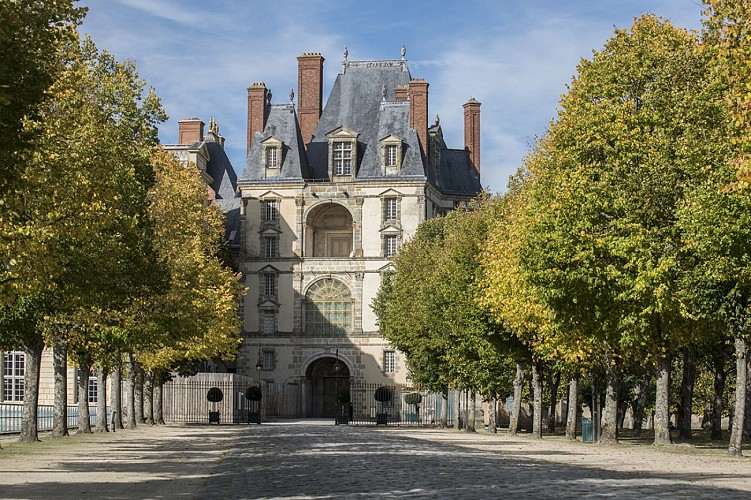
Palace of Fontainebleau
The Château de Fontainebleau is a big part of French history! This vast building, in both classical and Renaissance style, is not only famous for witnessing Napoleon's imperial adventure.From the royal charter of 1137 to the fall of the Second Empire in 1870, the Palace of Fontainebleau saw the lives of the greatest French sovereigns from day to day. The original medieval fortress was replaced by a Renaissance palace under the guiding hand of Francois I. At that time, two Italian artists, Primaticcio and Il Rosso vied in talent and founded the first School of Fontainebleau. The Galerie François I, which leads from the royal apartments to the chapel of the Convent of the Holy Trinity, is most original with its décor of frescoes, stucco and carved wood in praise of François I. The Ballroom was completed at the time of the last Valois kings, under Primaticcio’s direction. With Henri IV, the new Bourbon dynasty took over the palace, and built new rooms with interior decoration placed in the hands of the artists of the second School of Fontainebleau. Louis XIII completed the work started by his father. Under the Sun King Fontainebleau continued to be the royal family home, and the Grand Dauphin was born there in 1661. The king’s nieces were married from Fontainebleau, and the Edict of Nantes was revoked there in 1685. Louis XV and Louis XVI would spend the autumn there and initiated new, large scale building works and interior doing-ups. After the French Revolution, Napoleon I found the palace completely emptied of its furniture but intact. He undertook to refurnish the apartments and brought the palace back to its former glory as the home of the sovereign. Napoleon Bonaparte spent his last days there before his abdication in 1814 and departure for the Elba. Louis-Philippe was the first sovereign to order a complete restoration of Fontainebleau. The restoration of the Empire in 1852 gave renewed importance to the palace, and Napoleon III became strongly attached to this home, staying there regularly with his court. Housed in the Louis XV wing, the Napoleon I museum is dedicated to the Emperor and his family, with a large collection of objects from his everyday life, weapons used in military campaigns and gifts he received. The Chinese museum, created by Empress Eugenie, displays works of art from the Far East. The Jeu de Paume court, thought to be the oldest of the three surviving in France, is open to the public with demonstrations and introductory games. Le Nôtre's French gardens, the Queen’s English garden with its Fountain of Diana, the hedge maze and the Cour des Adieux are open to the public all year round. Boat excursions on the Etang aux Carpes or horse-drawn carriage rides are available. The Domain of the Fontainebleau Palace is inscribed at the UNESCO Humanity World Heritage. There is a little train going around the gardens during the touristic season.
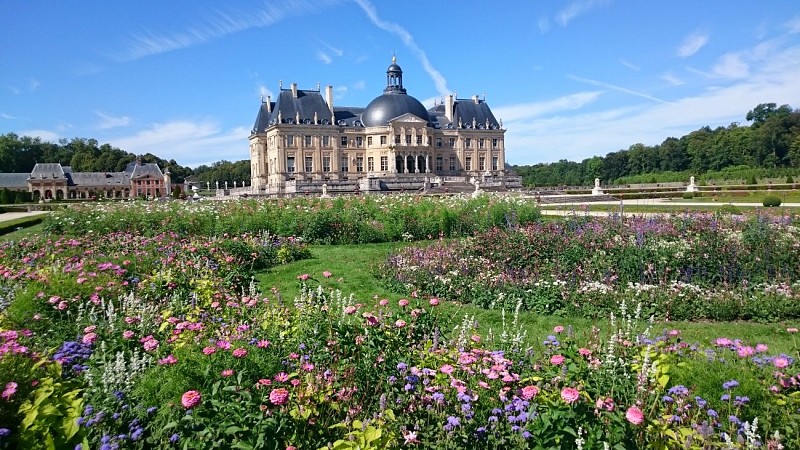
Chateau Vaux-le-Vicomte
This 17th century masterpiece combines the genius of three highly talented artists brought together by Nicolas Fouquet: the architect, Louis Le Vau, the decorator, Charles Le Brun, and the landscape architect André Le Nôtre.
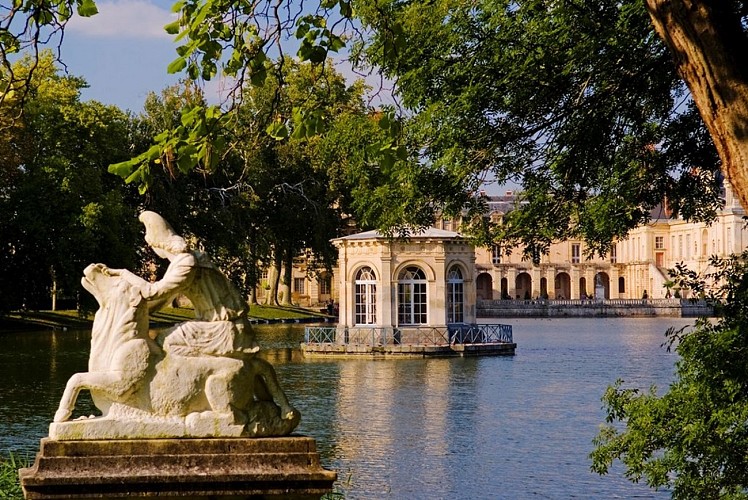
Fontainebleau palace gardens
In the 130 hectacres of garden , you can see the evolution of the art of the garden illustrated by the Great Flowerbed ("Grand Parterre") , French-style garden designed by Le Notre, the Carp Pond, the English garden, created under the first Empire, the Garden of Diana ("La jardin de Diane"), the Park , the 1200m canal ... Remarkable trees, Diana's Fountain, the Park, exotic essences, the English river ...These royal and imperial gardens are witnesses to the evolution of taste since the 16th until the 19th century in terms of landscaping. The Renaissance gardens created for Francis Ist and Henry IVth were mainly based upon a system of draining canals which started from the different wells and the carp pond and lead to the great canal. The Grand Parterre (Huge flowerbed) was created later in a very humid part situated between the carp pond and the canal. Under the reign of Louis XIVth, this "parterre" (the biggest one in Europe) will adopt a very classical appearance du to André Le Nôtre who conceived a real perspective leading from the pond to the canal with the fountain of "Tibre" in the centre of the parterre. This royal parterre reaches from the Maintenon alley to the cascades, from the ballroom and the quarter Henry IVth to the side perspective of "Saut du Loup" (the wolf hop). The Diana Garden is the former garden of the Queen. Its name comes from the fountain (17th century) which occupies its centre. This garden is limited by the "Galerie des Cerfs" built under Henry IVth (Deer Gallery), the small apartments (Louis XVIth), the Trinity Chapel, the Real Tennis court and separated from the town by a wall with some openings. The English garden was created in its present shape under the reign of Napoleon Ist. It is organised around an artificial romantic creek. Its valley like landscape integrates some sculptures and rare species of trees and plants. The carp pond, which dates back to the Middle Ages, is bordering this garden. In the centre of the pond the architect Louis Le Vau constructed a romantic pavilion under Louis XIVth (1662).
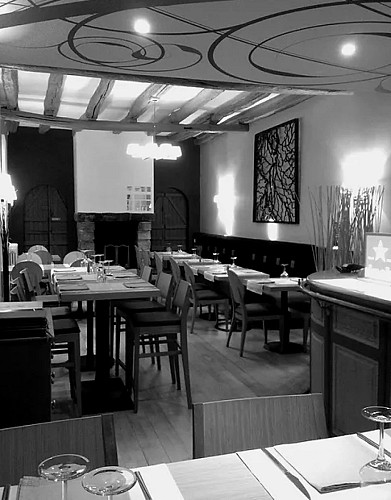
La Bacotte
Italian restaurant. Wide selection of pasta, pizzas, salads and meats. Eat-in or take away.Located in downtown Bois-Le-Roi, the Bacotte is an ideal stopover for all those who want to have lunch with colleagues or dine with family and friends. Come and have a good time, La Bacotte and his staff are at your service.
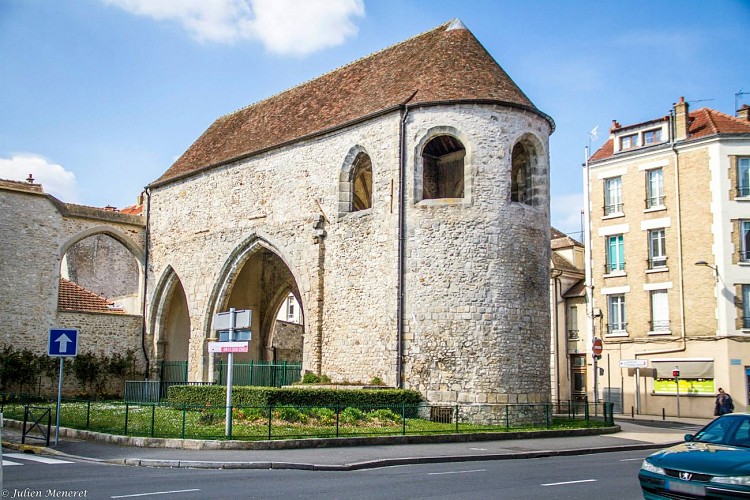
Le Prieuré Saint-Sauveur
Le prieuré Saint-Sauveur fait partie des monuments les plus anciens monuments de Melun. Ses vestiges sont inscrits à l'inventaire des monuments historiques depuis 1946.L'un des plus vieux monuments de Melun Le prieuré fait partie des monuments les plus anciens de la ville : une église et une crypte sont attestés archéologiquement dès la seconde moitié du Xème siècle. Les élévations actuelles datent en partie du XIIème siècle. Le prieuré est donné par le roi de France Louis VII à l’abbaye Saint-Séverin de Château-Landon en 1170. Il connaît un renouveau fin XVème-début XVIème siècle avec la reconstruction du cloître. Des vestiges valorisées par la Ville A la Révolution, il est vendu comme Bien National et est divisé en ateliers, commerces, habitations particulières… jusqu’en 1974, date à laquelle les vestiges de l’église sont dégagés par la Ville de Melun qui achète l’îlot. Fermé au public.

Millet Studio Museum
The house of the painter, the star of the Barbizon school. In his Workshop , Millet created his greatest masterpieces, such as "The Angelus" or "The Gleaners" ("Les Glaneuses"). This place, which has kept most of it's outer appearance from the 19th century, holds many of the master's items, and original paintings from his contemporaries.In the house formerly rented by the painter in Barbizon the workshop and the ground floor are dedicated for a museum about the painter’s live and the Barbizon painters movement. It is in this place Millet created most of his masterpieces and where he and his family lived until his dead. Paintings from many artists of the Barbizon movement as well as the layout of his studio behind its wide window recall the leading painters of the Barbizon school and Millet’s life and work. One room is a showroom for nowadays artists related to Barbizon inspiration their works as well as reproductions and stamps are purchased.
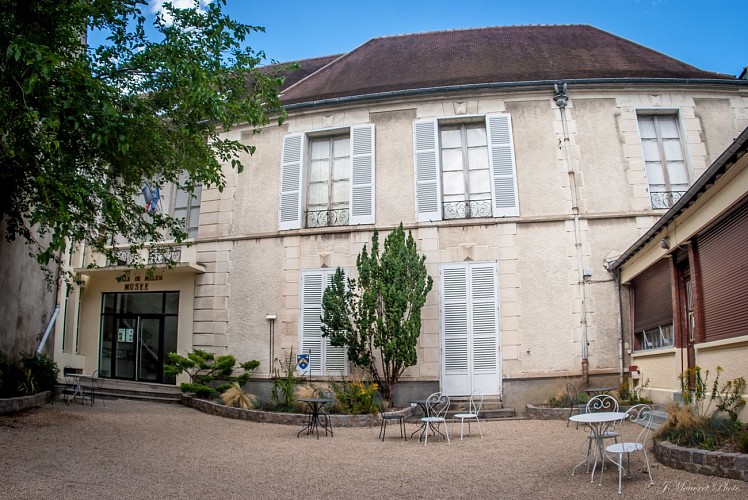
Musée d'Art et d'Histoire de Melun
Located in the Vicountcy House, a 16th century home that belonged to Nicolas Fouquet, the Melun museum was created in 1860.
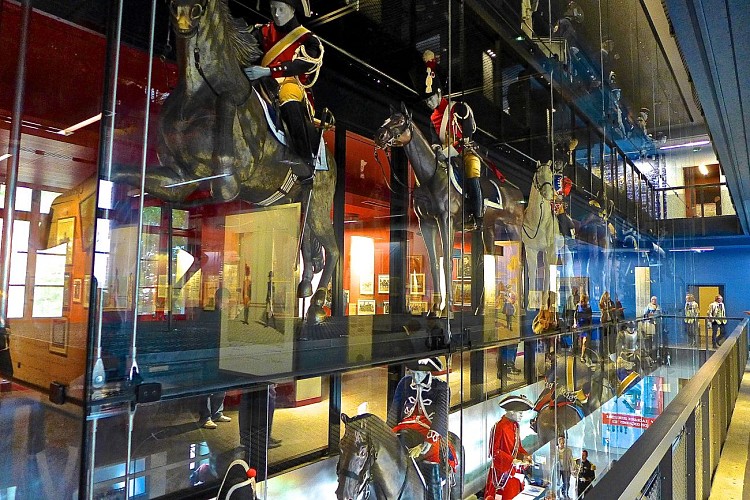
National Gendarmerie museum in Melun
For the first time ever, the Gendarmerie Nationale Museum puts its heritage on display to the general public. A rich collection as diverse as it is plentiful, to immerse the visitor in the past of this institution (duties, lifestyle, resources, etc.).
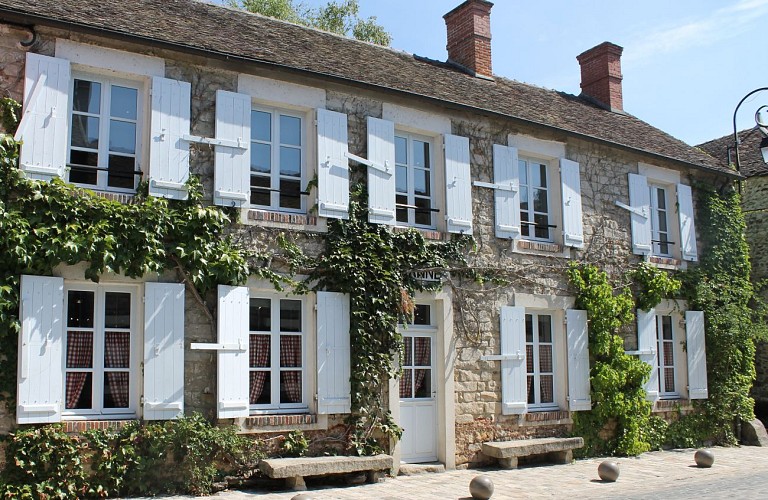
Barbizon school museum: the Ganne Inn
It is difficult to know precisely when the inn was built. Before 1820, the only inns in the region were at Chailly. Alfred Sensier, friend of Théodore Rousseau and a historian of Barbizon, gives the date of 1824.A return to the time of the painters of the forest of Fontainebleau. The museum of the school of Barbizon is spread over two sites : the Ganne Auberge and the Workshop-House of Theodore Rousseau. One is the principal historical way-points of the artists who came to work in the forest of Fontainebleau (1830-1875). The other is the Workshop where the famous landscape artist Theodore Rousseau lived from 1847 until his death in 1867. The Exhibition Rooms of the Auberge restore the friendly atmosphere so dear to the Peint'à Ganne, thanks to the furniture and decors and through a hundred different works (Jean-François Millet , Narcisse Diaz de la Peña , Constant Troyon , Rosa Bonheur...). Luck has had it that the newspaper “L’Illustration” published a full report in 1853, illustrated with engravings, showing the pictorial treasures hidden inside this modest inn, the major part of which has come miraculously down to us. The very serious Revue des Arts published in 1854 a guided tour of the three ground floor rooms and detailed the decorations. Has have helped us reconstruct the rooms at the inn at its most brilliant period. The painted furniture and panels and the way the rooms are presented are a good representation of the painters’ inn. The restoration of the upper floor started in 1990, has revealed decoration painted or drawn by the artists when staying in the rooms. Three exhibits show the work of the Barbizon School with landscape and animal themes. A very attractive audiovisual presentation takes you back to the time of the painters of the Barbizon School Leaving behind them Parisian studios and academicism, the "painted in Ganne" came together in the Auberge de Barbizon to paint "sur le motif" and for very bohemian parties.
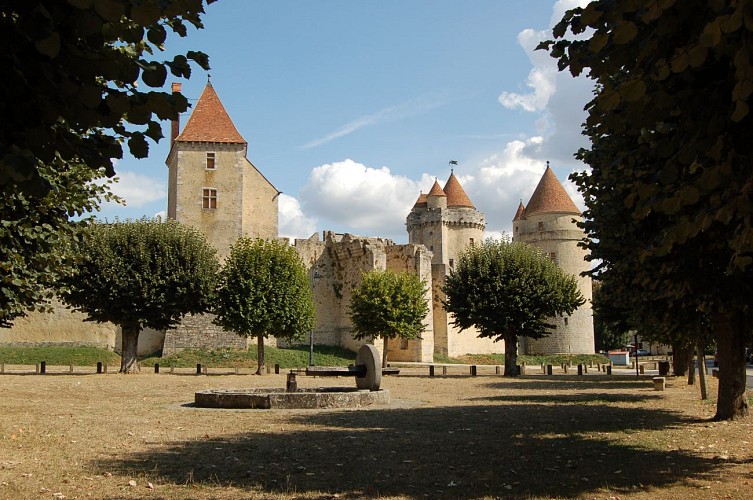
Blandy-les-Tours : village de caractère
Revêtez votre armure de chevalier ou votre robe de princesse et partez à la conquête de son château fort au cœur du village de Blandy-les-Tours aux allures médiévales !Situé sur un promontoire qui domine la vallée du ru d’Ancoeur et organisé autour de son château fort, Blandy-les-Tours est un village d’exception pour les amoureux des vieilles pierres. Dans un écrin de verdure, sa citadelle, unique en Île-de-France, vous transporte au 18e siècle ! Témoin unique de la guerre de Cent ans, place forte des vicomtes de Melun, entouré de fossés et conçu pour se prémunir des attaques extérieures, le château de Blandy donne sa notoriété au village et fait l’admiration de visiteurs du monde entier venus apprécier le panorama sur la campagne briarde. Découvrir Blandy-les-Tours, c’est voyager dans le temps et, peut-être, croiser son fantôme au suaire sanglant…Mais Blandy-les-Tours, c’est aussi un foyer vivant de la création artistique contemporaine avec ses festivals et ses manifestations organisés tout au long de l’année ! Baladez-vous dans ce village authentique et appréciez la richesse de son patrimoine architectural, de ses fermettes briardes et de ses paysages bucoliques. Bienvenue à Blandy-les-Tours !

Église Saint-Germain
De plan rectangulaire simple à chevet droit, l’église Saint-Germain à Sivry-Courtry ne comporte ni bas-côté, ni transept. L’édifice est restauré en 1640, en 1881 puis en 1983.Saint Germain est le saint patron de l’église de Sivry. Évêque d’Auxerre en 418 et délégué du pape Célestin 1er, saint Germain est envoyé en Angleterre pour y combattre la doctrine du moine Pélage, qui niait le péché originel. Il participe au développement de l’Église de Grande-Bretagne et consacre évêque saint Patrick, l’apôtre des Irlandais. Il meurt à Ravenne en 448. De plan rectangulaire simple à chevet droit, l'Église ne comporte ni bas-côté, ni transept. La voûte en forme de bateau renversé a la particularité d'être traversée de part en part de poutres en bois peint. Restaurées au 20e siècle, elles ont retrouvé leur couleur bleue d'origine, couleur certainement dédiée à sainte Marie. A l'intérieur, l'édifice présente des voûtes d'ogives sans nervures. L’ édifice est restauré en 1640, en 1881 et en 1983. De construction plus moderne, le porche sud date probablement du 19e siècle. Le clocher d’une hauteur de 22 mètres a une base carrée et se termine par une couverture à quatre pignons flanqués de gargouilles et surmontés chacun par une originale girouette-fanion. Chaque pignon est par ailleurs agrémenté d’une horloge. Sur chaque côté du clocher, deux séries de deux abat-son en bois et ardoises renvoient le son de la cloche vers le sol. L'Église abrite de nombreux objets protégés au titre des Monuments Historiques : tableau, dalle funéraire...
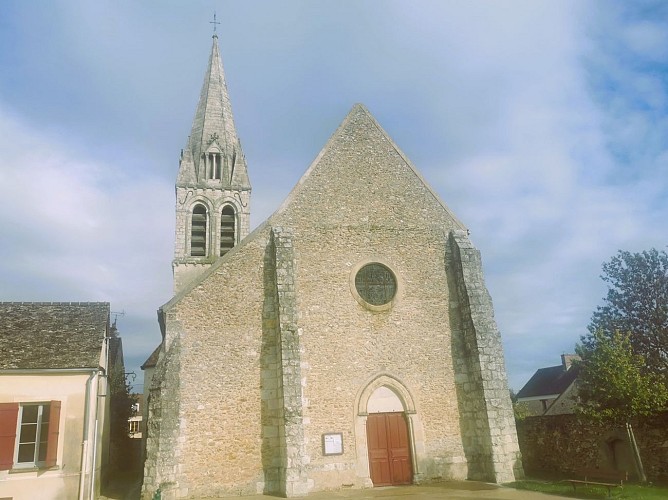
Église Saint-Martin
L’église Saint-Martin à Moisenay a été construite aux 12e et 13e siècles et possède la particularité d’avoir le seul clocher de Seine-et-Marne tout en pierres appareillées. Elle est classée aux Monuments Historiques depuis 1889.Édifiée sur l’emplacement d’un premier sanctuaire chrétien et complétée par la construction du clocher au 13e siècle, cette église, jamais remaniée par la suite dans son architecture générale, est sans doute la plus ancienne de Seine-et-Marne avec l’église Saint-Loup de Naud. Sa nef comporte trois travées et son chœur à chevet plat. L’édifice possède de nombreuses colonnes et colonnettes ornées de chapiteaux sculptés, qui rappellent ceux de la collégiale de Champeaux, de la même époque. Comme dans de nombreuses églises de la région, la porte d’entrée était autrefois précédée d’un auvent portique. L'Église abrite de nombreux objets protégés au titre des Monuments Historiques : statues, tableaux...
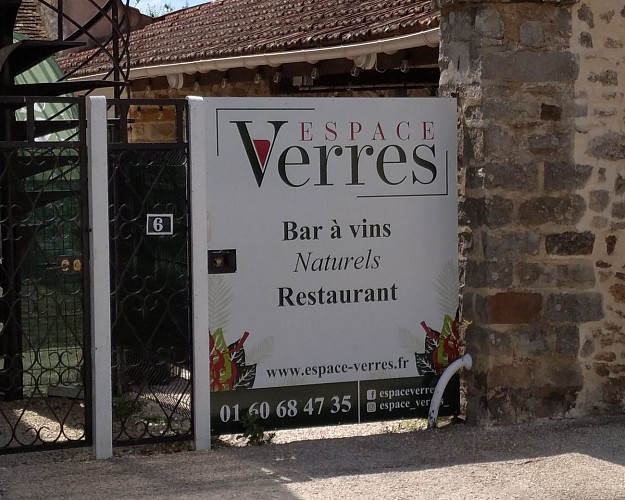
Espace Verres
Rendez-vous à Sivry-Courtry dans un bar à vin pour déguster une cuisine traditionnelle savoureuse accompagnée de vins naturels dans un cadre familial et convivial.Remontons quelques années en arrière. Suite à une reconversion professionnelle, Catherine Pouchin a décidé de vivre de sa passion et de devenir cheffe car depuis sa plus tendre enfance, elle a toujours aimé cuisiner. Avec deux diplômes de cuisine en poche, et de nombreuses expériences en cuisine, en 2019, elle parvient à reprendre un fonds de commerce à Sivry-Courtry. Elle vous propose une bistronomie de qualité avec des produits locaux et de saison, des menus, des planches de charcuterie et de fromages, des vins naturels et biologiques qui défieront les palais les plus gourmands et raffinés ! Réservation conseillée.
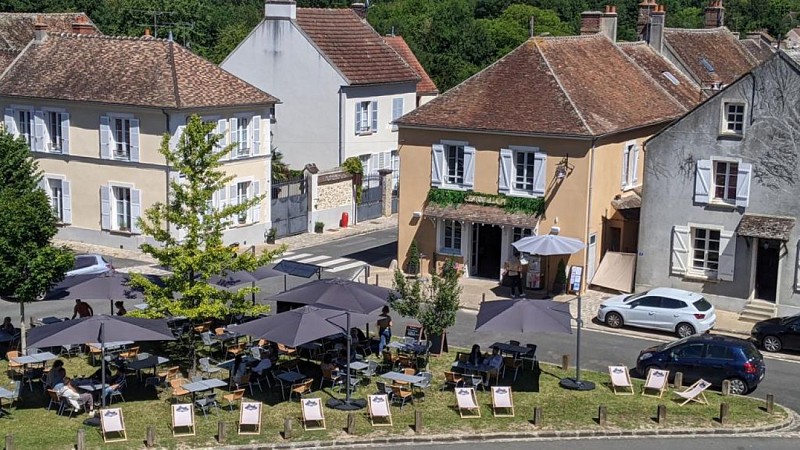
L'Entourloupe
L’entourloupe, votre restaurant à Blandy-les-Tours vous accueille, aux pieds de son château médiéval. Que ce soit autour de la cheminée en hiver ou sur la terrasse ensoleillée l’été, venez passer un moment inoubliable entre amis et en famille.L’entourloupe, c’est l’histoire d’un lieu de copains dont rêvaient Angélique et Damien. En 2022, Ils décident de le créer dans leur ville d’adoption et de cœur, Blandy-les-Tours. La recette est simple : 1. Une cuisine simple, efficace et bien réalisée, autour de produits frais. 2. Une équipe hyper dynamique, très pro et soudée pour prendre soin de leurs clients. 3. Une terrasse au pied du Château de Blandy ou une salle chaleureuse avec cheminée pour profiter d'une belle sélection de cocktails et bières locales. Mélangez tout avec de bonnes playlists musicales sont ils ont le secret…et vous y voici : Bienvenue à L’entourloupe ! Angélique, Damien et surtout leur formidable équipe vous attendent avec impatience ! Réservation conseillée.
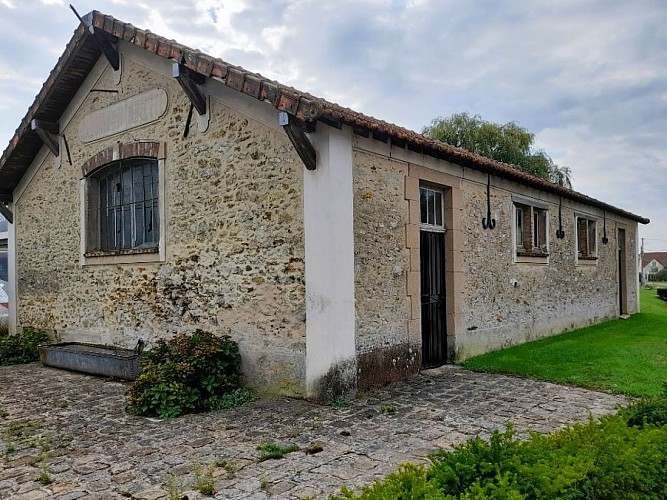
Lavoir Sainte-Henriette
Le lavoir Sainte-Henriette à Sivry-Courtry date de la deuxième moitié du 19e siècle.L’accès à ce bâtiment rectangulaire de 16,70m x 9,60m se fait par 2 portes opposées sur la façade principale. Elles sont surmontées d’ouvertures vitrées. A la place des portes, des grilles en fer forgé installées en 2010 permettent une vue dégagée sur l’intérieur. Le nom Sainte-Henriette apparaît dans un bandeau stylisé sur le pignon nord au dessus de la baie vitrée. Une table de pique-nique à proximité vous permet de vous reposer.
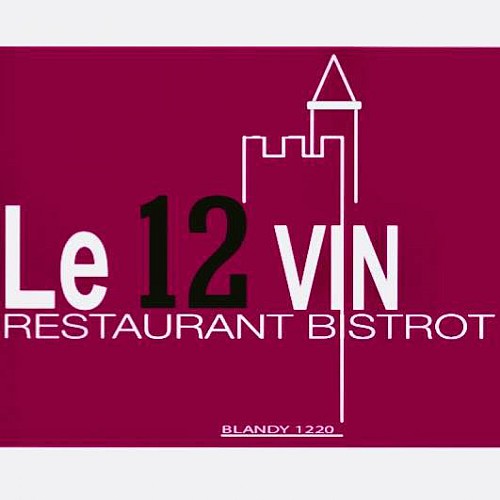
Le 12 Vin
Murielle et Jérôme vous accueillent dans leur restaurant face au Château de Blandy-Les-Tours, dans un cadre de qualité qui allie une décoration cosy aux couleurs chaudes et aux lumières tamisées en soirée. L'été profitez de la terrasse ombragée.Côté cuisine, Jérôme Perreve et Thony sont à l’ouvrage. Jérôme, 35 ans de métier, est passé par l’Intercontinental, le Georges V, le Prince de Galles et a appris toutes les bases de son métier aux côtés de Gilles Jouanin, meilleur ouvrier de France. C’est malgré tout avec une grande simplicité mais un attachement sincère aux produits frais et de saisons, qu’ils vous accueillent dans leur restaurant, qui se veut chaleureux et accessible. Dans votre assiette retrouvez des produits frais travaillés dans les règles de l’art. Ils ont à cœur de garder l’esprit du patrimoine culinaire français et l’héritage culinaire artisanal! Ils ont d'ailleurs reçu début 2023 la plaque "Artisans militant de la qualité" remise par le Collège Culinaire de France. Réservation conseillée.
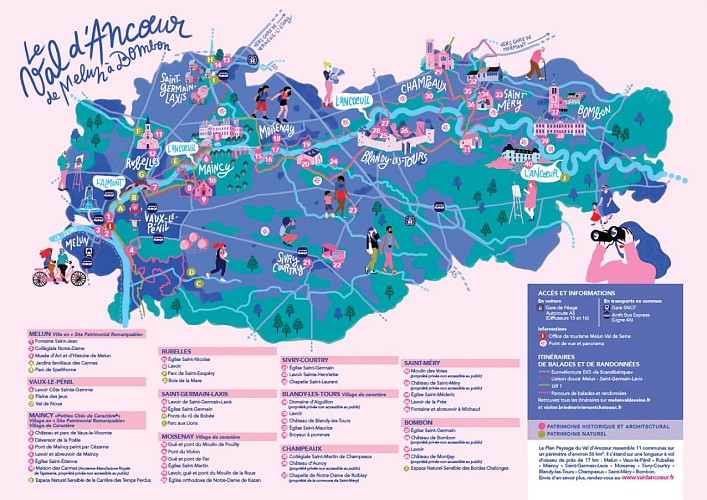
Le Val d'Ancoeur : site classé
L’histoire commence comme un conte de fées : "Il était une fois le Val d’Ancœur…" avec ses châteaux, ses légendes et les 3 noms de ce petit ruisseau, devenu un mythe, qui d’Ancœur devient Ancoeuil pour s’achever en Almont… avant de se jeter dans la Seine.(extrait du site des Archives Départementales) Le ru d'Ancoeur est un cours d'eau qui prend sa source dans la commune de Grandpuits-Bailly-Carrois à une altitude de 125 m. Il prend ensuite le nom d' "Ancoeuil" sur la commune de Moisenay et rejoint, après un trajet de 25 km depuis sa source, le Bassin de la Poële du château de Vaux-le-Vicomte. À la sortie de ce bassin, il se jette dans l' "Almont" à 5 km en aval dans la Seine à Melun. Il constitue avec ses affluents un bassin versant d’environ 306 km². Le ru d'Ancoeur traverse les communes de Grandpuits-Bailly-Carrois, La Chapelle-Gauthier, Bréau, Bombon, Saint-Méry, Blandy-les-Tours, Moisenay, Maincy et Melun Classé "Site d'Exception" depuis le 14 octobre 1985 par la Direction Régionale et Interdépartementale de l’Environnement et de l’Energie d’Île-de-France, le ru d'Ancœur offre des paysages enchanteurs. Le site classé s’étend sur 1861 hectares. Au fil des cours d’eau - l’Almont, l’Ancoeuil (ou Ancueil) puis l’Ancoeur - le Val d’Ancœur égraine ses panoramas : des villages, des forêts, des châteaux (Vaux-le-Vicomte, Blandy-Les-Tours…) mais aussi, à la confluence de la Seine, des espaces urbanisés. "L’Ancoeur est une rivière très peu abondante, fort peu régulière et en danger de tomber à sec régulièrement. La lame d'eau écoulée dans son bassin versant est de 96 millimètres annuellement, ce qui est parmi les plus faibles de France, plus de trois fois inférieur à la moyenne d'ensemble du pays, et surtout largement inférieur à la moyenne de la totalité du bassin de la Seine (240 millimètres environ). Le débit constant de l’Ancoeur a cependant pendant des siècles permis de mettre en œuvre les nombreux moulins. Le nombre important d’ouvrages hydrauliques, comme les canaux, les bassins et les étangs, les petites retenues et les moulins confèrent au paysage une identité particulière tournée vers l'eau et sa maîtrise. Elle est à mettre en relation avec le caractère humide des terrains." Lieu de vie, de production et de création, le Val d’Ancoeur concentre des lieux de patrimoine majeurs sur tout le territoire concerné : églises et œuvres d’art depuis le 12e siècle, châteaux, fermes, moulins, habitat rural, petit patrimoine rural… Il est aussi devenu sujet de réflexion et d’admiration esthétique grâce aux artistes qui se sont emparés de ses beautés pour les interpréter à leur façon. - L'Ancueil ("Anqueil" dans son orthographe du 17e siècle) a par exemple donné son nom à une statue majestueuse du parc de Vaux-le-Vicomte située à gauche de l’ensemble des grottes (1659-1662), face au Tibre installé à droite en 1659. - Le peintre Paul Cézanne en 1879 a immortalisé le Pont de Maincy (conservé au Musée d'Orsay) - Et le sculpteur Auguste Rodin a consacré de superbes dessins à la collégiale de Champeaux (1890-1917), témoignages de son admiration. Depuis plusieurs années, la Communauté de Communes Brie des Rivières et Châteaux et la Communauté d’Agglomération Melun Val de Seine et se sont associées pour élaborer un Plan de Paysage et ainsi révéler les atouts du Val d’Ancoeur. Une opportunité pour la protection et la mise en valeur du patrimoine paysager. Le périmètre qui s’appuie sur le site classé rassemble 11 communes sur un périmètre d’environ 56 km². Il s’étend sur une longueur à vol d’oiseau de près de 17 km.
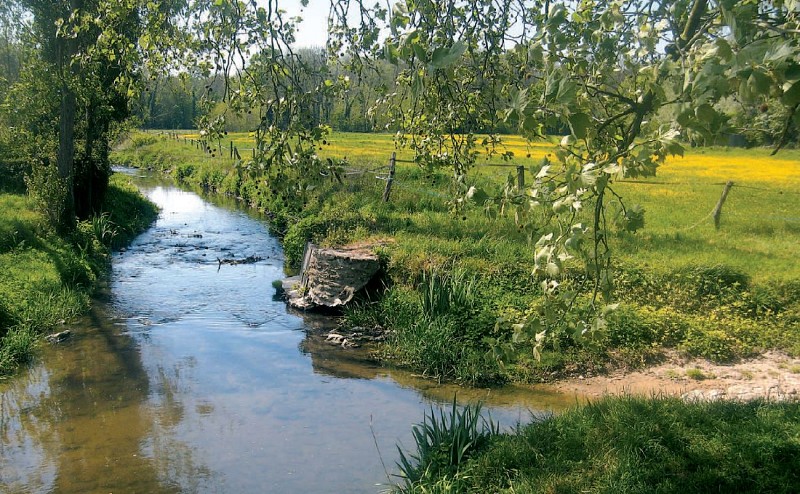
Moisenay : village de caractère
Dans le village de Moisenay en Seine-et-Marne, passez sur le pont du violon ou sur le gué du moulin de pouilly… des balades bucoliques qui incitent à l’apaisement.Le village est entouré par les châteaux, Vaux-le-Vicomte à l’ouest et Blandy-les-Tours à l’est. Il est également traversé par le sentier GR1 offrant ainsi aux randonneurs la découverte d’un patrimoine pittoresque et d’un village accueillant et charmant avec sa belle église et les champs environnants. Non loin des grandes villes comme Melun, Moisenay est le cadre de vie idéal pour ses habitants qui bénéficient d’un environnement préservé tout en étant proche des commodités inhérentes à la vie quotidienne. De belles balades en perspective et il ne faut pas non plus hésiter à faire un détour par les beaux châteaux situés non loin de là. Bienvenue à Moisenay !
Additional information
Services for cyclists
Safety instructions and good practices: - Respect the French highway code and remain vigilant on and near all roads, particularly at intersections and when crossing départementales (secondary roads) and passing over bridges. To that end, carefully read the guide provided for each itinerary. - Wear a properly fitting helmet. At night and in bad weather, wear a fluorescent vest with reflective bands and carry a proper torch/flashlight. - Restrictions for children under 12: make sure that the loop you want to follow is well suited to your children. - After every picnic, leave no trash behind, and respect the wild flora and fauna. - Prior to departure, make sure that your smartphone or tablet is sufficiently charged. Consider taking along a charger. - If you happen to notice any anomaly while following an itinerary, please don’t hesitate to write us! We value all such observations and remarks.
Updated by
Seine et Marne Attractivité - 10/04/2024
www.seineetmarnevivreengrand.fr/
Report a problem
Open period
All year round.
Contact
Phone : 01 60 39 60 39
Email : info@attractivite77.fr
Website :
baladnature77.cirkwi.com/#!page=circuit&id=50740&langue=fr
www.seineetmarnevivreengrand.fr/
Facebook : www.facebook.com/77vivreengrand
Data author

The Cirkwi brief
Embark on a two-day cycling adventure designed by Seine et Marne Attractivité that promises more than just a ride. Meandering through the northern reaches of the stunning Fontainebleau forest to the Val d'Ancoeur, this route unveils the grandeur of three historical chateaus - the medieval fortress of Blandy-les-Tours, the majestic Vaux-le-Vicomte, and the regal Fontainebleau. Coupled with a visit to the picturesque painters' village of Barbizon, this journey is not just about pedaling but experiencing the lush, green countryside dotted with enchanting villages. It's a narrative of history, art, and nature woven into the pedal strokes of your bicycle.
Brief Technical Overview
The "Three Castles Circuit" is a comprehensive 74.9km bike route with an elevation range between 39m and 140m. Riders should prepare for a total positive elevation gain of approximately 605 meters, indicating some challenging ascents. While the northern segment presents some busy road crossings requiring extra caution, particularly for those cycling with children under 12, the southern route promises a more serene experience with forest trails partially closed to traffic. However, it's worth noting that the entire path is not fully paved, posing an additional challenge especially for road bikes.
Seasonal Tips and Safety Advice
Regardless of the season, always check your bike's condition before setting off. Spring and autumn offer cooler temperatures and stunning natural beauty, making them ideal for this ride. High summer brings lush landscapes but also higher temperatures; ensure you carry plenty of water and sunscreen. Winter, while crisp and beautiful, may present icy paths; proceed with caution. Always wear a helmet, carry a basic repair kit, and ensure you have a means to contact emergency services. Given the route's occasional busy crossings, especially in the northern part, vigilance is paramount for safety.
Historical Significance of the Area
Bois-le-Roi, alongside its encompassing region, is steeped in rich historical and cultural significance. The area sits on the edge of the Fontainebleau forest, a royal hunting ground for French monarchs, symbolizing its long-standing connection with aristocracy and art. Each castle on the route - Fontainebleau, Vaux-le-Vicomte, and Blandy-les-Tours, offers a unique glimpse into France's architectural evolution and social history. Barbizon, the village of painters, sparked a revolutionary artistic movement in the mid-19th century, emphasizing the region's pivotal role in shaping French cultural landscape.
Regional Weather Patterns and Best Visit Times
The region experiences a temperate climate, with mild springs and autumns, warm summers, and moderately cold winters. The best times for embarking on this cycling journey are late spring (May to June) when the temperature is comfortable and the landscape is blossoming, and early autumn (September to October) when the heat subsides, and the forests display a vibrant palette of colors. Summer offers longer days; however, the heat can sometimes be intense, especially in the afternoons. Winter rides are feasible but require preparation for colder conditions and shorter daylight hours.